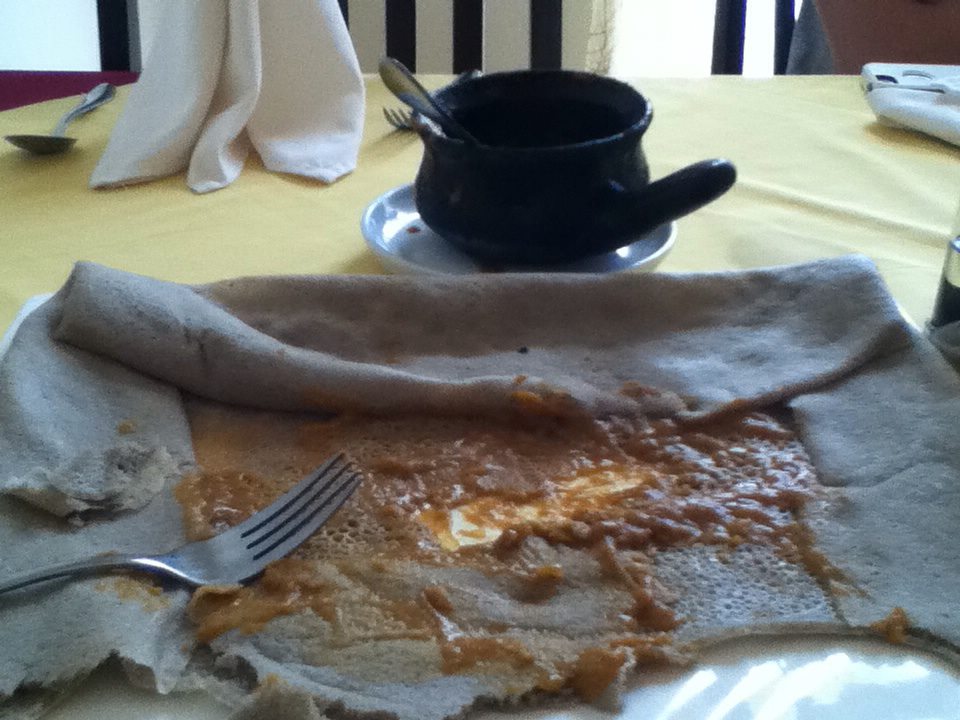By Karissa Magnuson
Student, Ohio State College of Veterinary Medicine
For the past two days we have been in Debark, a town about 100 kilometers north of Gondar. Debark was our second data collection site for our rabies research project.
It is a common resting place for tourists who wish to visit the Simien Mountains. On our two-hour drive up to the city, we passed stunning scenery. The countryside is full of lush, rolling hills and looks like a patchwork quilt of rich coffee brown fields and vibrant green countryside.
We passed many farmers out plowing their fields with oxen and an old-fashioned plow. It was idyllic, and I felt like I had stepped back into a different time. It was hard to go five minutes without seeing a shepherd out with his flock of goats or sheep, and there were always cows, goats, and sheep grazing in the distance. Our van had to stop or slow down a few times as wandering goats, sheep, and cattle crossed the road.
The people of Debark were very friendly and accommodating. For the project, my team was in charge of urban adults and children. It was truly a privilege to be able to walk their streets and be invited into their houses, especially since they knew nothing about me. Every house we went to, I was offered a chair or a place to sit, and a few times, they roasted a snack for me over their fire for me to eat. The hospitality here was truly amazing.
Our last day of data collection, we went up to a small neighborhood on a hill. Immediately we were surrounded by a huge group of children, all probably under the age of 10. They were all extremely friendly and asked me my name.
As my Ethiopian team members told them about the study and asked if they would like to participate, one of the little girls grabbed my hand.
All the children were eager to participate in the study. As we followed them back to their houses, my other hand was grabbed by a little boy, and I was led off down the dirt road to their homes. Walking from one house to another, my hand was never empty. At one point, two of the children had a little disagreement about who actually got to hold my hand.
When we finished our data collection and were saying goodbye, all the children who had followed us around came over to me and shook my hand, and we touched shoulders. In Ethiopia, when you greet someone you shake hands and touch shoulders with the person. There must have been six or seven kids in line to say goodbye to me. It was truly a heartwarming and memorable experience that I will carry with me forever.





